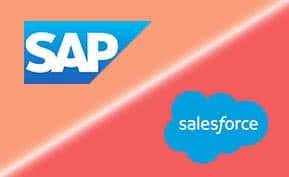Driver-Based Planning for SaaS: How FP&A Software Connects Pipeline, Churn and Cash
Why Traditional Budgeting Breaks in SaaS
SaaS companies live and die by recurring revenue, renewal behavior and unit economics. Traditional budgeting — built around static revenue growth assumptions and percentage-of-revenue expense lines — hides the levers that actually move the business. Driver-based planning with modern FP&A tools makes the full SaaS engine visible: pipeline, win rates, activation, churn, expansion and cash runway.
Key SaaS Drivers Every FP&A Model Needs
A robust driver-based SaaS plan usually starts with:
- Pipeline by stage and segment.
- Win rates by stage, product and channel.
- Ramp assumptions for new sales reps.
- Churn and downgrade rates by cohort or segment.
- Expansion drivers: upsell, cross-sell, price uplift.
- Headcount plans with salary bands, variable comp and benefits.
FP&A software lets you link these operational drivers directly to ARR, revenue, gross margin and EBITDA lines, so management can see exactly how changes in sales productivity or retention shape the P&L.
ARR Waterfall Modeling Inside FP&A Tools
Most SaaS boards expect an ARR waterfall view: starting ARR, new logo ARR, expansion, contraction and churn. In a driver-based model, these are not static numbers; they are outputs. FP&A systems can calculate ARR components automatically using pipeline, bookings cadence and renewal assumptions.
When sales or customer success leaders adjust drivers in the planning interface, the waterfall updates automatically, making conversations about trade-offs concrete and fast.
Connecting Unit Economics to the Plan
Driver-based planning is also where you operationalize unit economics (LTV, CAC, payback). In modern FP&A platforms, you can store and visualize:
- CAC by channel and segment.
- Gross margin by product line.
- LTV/CAC ratios under different churn and expansion scenarios.
This helps finance leaders answer questions like: “If we spend an extra $1M on paid marketing in Q3, what happens to ARR, cash and LTV/CAC by next year?”
Cash Runway and Fundraising Scenarios
For venture-backed SaaS companies, cash runway is the other side of driver-based planning. FP&A tools integrate cash flow with ARR models, so leadership can see how hiring plans and go-to-market bets impact burn. It becomes easy to run:
- A conservative scenario that extends runway with slower hiring.
- An aggressive scenario that pulls fundraising forward but accelerates growth.
- A balanced scenario aligned with board guidance.
Cross-Functional Collaboration in the Model
Driver-based SaaS planning works best when sales, marketing, product and success all co-own their inputs. FP&A software enables role-based access so each team can adjust certain levers (pipeline, campaigns, headcount) while finance controls global assumptions (FX rates, overhead allocation, tax). This joint ownership improves forecast accuracy and buy-in.
Rolling Re-forecasting in High-Growth SaaS
Because SaaS businesses evolve quickly, static annual plans are almost guaranteed to miss reality. Most modern teams pair driver-based models with rolling re-forecasts — monthly or quarterly updates that feed new actuals, sales insights and retention data back into the FP&A system. That way, decisions about hiring, pricing and product investments reflect current traction, not last year’s hopes.
Common Pitfalls to Avoid
Common mistakes in SaaS planning include:
- Using a single average churn rate for all segments.
- Ignoring lag between bookings and revenue recognition.
- Underestimating time-to-productivity for new reps.
- Planning headcount as a simple percentage of revenue without operational logic.
Driver-based models in FP&A tools help expose these assumptions and stress-test them with sensitivity analysis.
Final Thoughts
For SaaS companies, driver-based planning is not a nice-to-have — it’s how you link GTM strategy, product bets and hiring plans to financial outcomes. FP&A software turns complex SaaS math into an interactive model, so finance and business leaders can see the path from today’s pipeline to next year’s ARR and cash with far more clarity.







